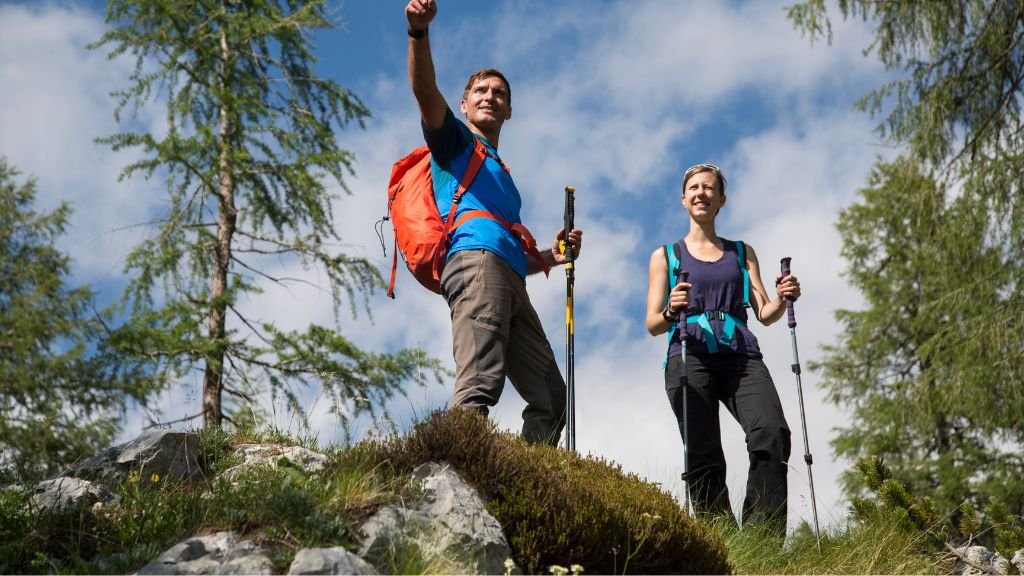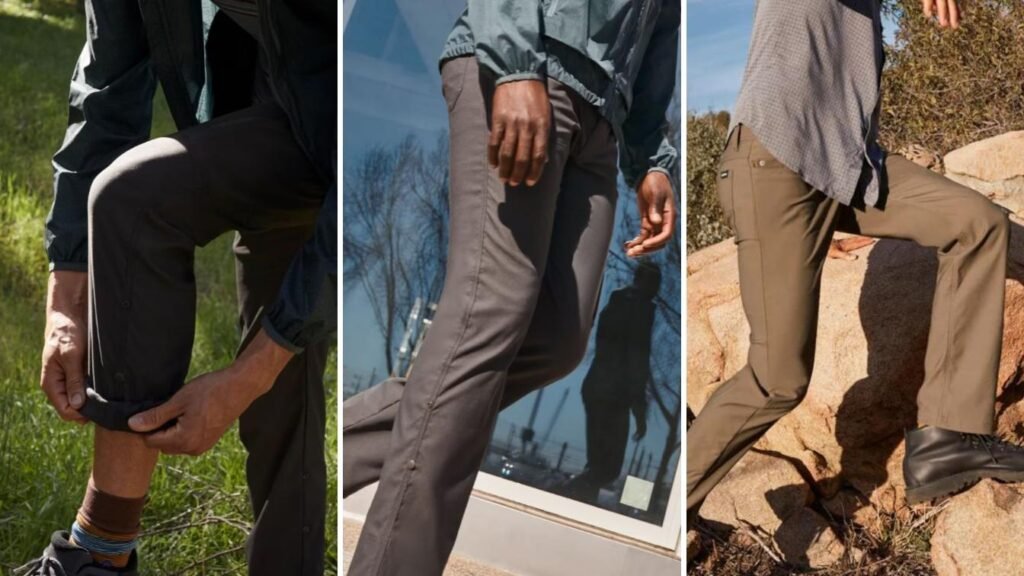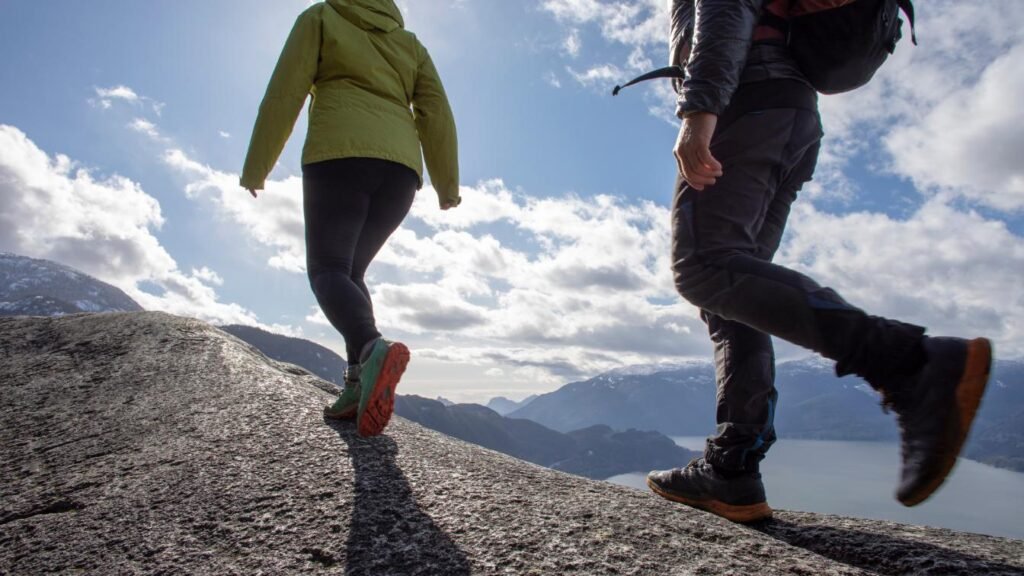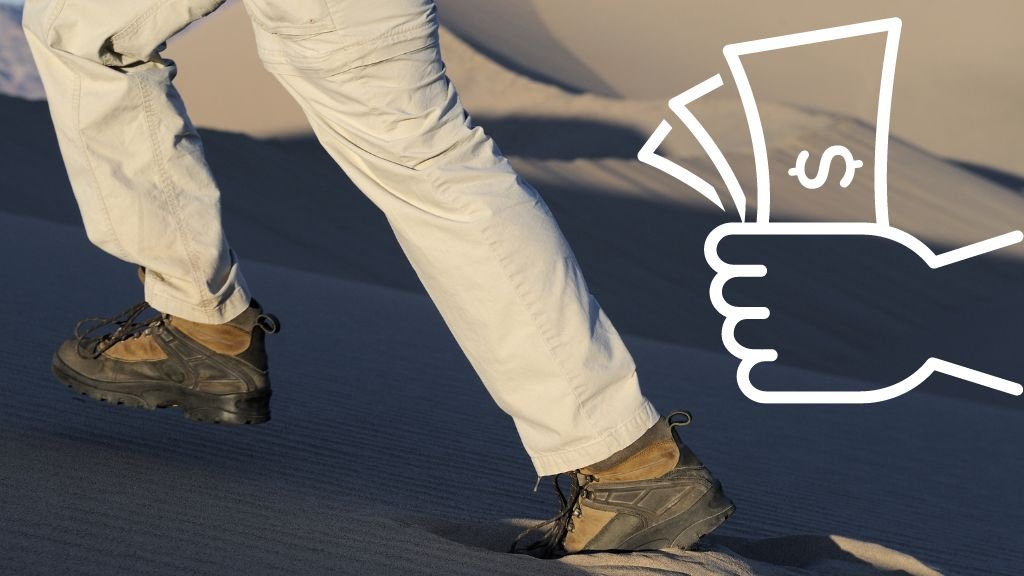You’re ready to embrace the outdoors, but are your legs just as prepared? While shorts or leggings might seem comfortable, this article will shed light on why hiking pants are your ultimate hiking choice.
We will delve into the benefits of specialized hiking pants over other types of attire and address a concern you might not even realize you have.
Why Should You Choose Pants for Hiking?
Selecting the appropriate legwear can make a significant difference in your outdoor experience. Here’s why you should choose pants specifically designed for hiking:
- Durability and Protection – Hiking pants are built tough. They’re designed to withstand rough terrain, resist tears from thorny brushes, and prevent scrapes against rock surfaces.
- Weather Resistance – Many hiking pants come with weather-resistant features such as water-repellent coatings and wind-blocking materials.
- Comfort and Mobility– Although durability is key, comfort doesn’t take a backseat when it comes to hiking pants.
- Versatility and Adaptability– Versatility is another strong suit of hiking pants. Some models convert into shorts with zip-off legs, making them perfect for fluctuating temperatures throughout the day.
- Storage Options– With ample pockets, hiking pants offer practical storage options for small essentials like maps, snacks, or a multi-tool.
- UV Protection– Exposure to the sun’s UV rays can be harmful, especially at higher altitudes where the atmosphere is thinner.
- Breathability and Temperature Regulation– The fabric used in hiking pants is typically breathable, wicking moisture away from the body to keep you dry and comfortable.
Hiking pants check all the boxes for features that enhance your hiking experience. They bring together durability, protection from weather and the environment, comfort for movement, and practical versatility – benefits that are harder to find in conventional clothing choices for hiking.
Hiking Pants vs. Other Legwear for Hiking
Below is a detailed comparison that shows why hiking pants are often the best choice for most hiking adventures.
| Criteria | Hiking Pants | Jeans | Cotton Leggings | Shorts |
|---|---|---|---|---|
| Durability and Protection | Excellent (resists tears) | Good (thick but can restrict) | Poor (can tear easily) | Fair (but lacks leg protection) |
| Weather Resistance | Excellent (water and windproof) | Poor (absorbs water) | Poor (soaks quickly) | Poor (no protection from cold) |
| Comfort and Mobility | Excellent (made for movement) | Fair (stiff and may chafe) | Excellent (flexible) | Excellent (max freedom) |
| Versatility and Adaptability | Excellent (all-weather use) | Poor (mainly for dry weather) | Fair (limited by weather) | Fair (good for warm weather) |
| Storage Options | Excellent (multiple pockets) | Fair (limited pockets) | Poor (few or no pockets) | Fair (usually few pockets) |
| UV Protection | Excellent (built-in UPF ratings) | Fair (thick fabric helps) | Poor (little protection) | Poor (exposes skin to sun) |
| Breathability and Temperature Regulation | Excellent (ventilation features) | Poor (traps heat) | Good (depends on fabric) | Excellent (allows air flow) |
Hiking pants outperform other types of legwear as they offer an exceptional balance of durability, protection, and comfort.
While jeans, cotton leggings, and shorts might be suitable in certain scenarios, hiking pants are versatile and adaptable for a wide range of environments, making them the best overall choice for hikers.
Durability and Protection
When you go hiking, you face tough paths. You need pants that can handle that. Hiking pants are strong. They are made to last through walks on rocky trails and through thick forests.
- Strong Fabric: They use materials like nylon or polyester, which don’t rip easily.
- Reinforced Areas: Parts where pants usually tear, like the knees and seat, are made stronger in hiking pants.
If you hike somewhere with lots of rocks and branches, like the rugged terrains of the Sierra Nevada, you’ll be glad you wore the right pants.
Jeans, Leggings, and Shorts: Might Not Take the Heat
Now let’s look at other pants:
- Jeans: They’re heavy and can tear when snagged on something sharp.
- Leggings: They might be comfy, but they can rip easier than hiking pants.
- Shorts: They leave your legs open to scratches and bites from insects.
Protection Wherever You Go
Here are some useful tips:
- Choose Tough Materials: Like nylon or ripstop fabrics.
- Look for Extra Padding: Especially on the knees and backside.
Weather Resistance
When you go hiking, the weather can change fast. One minute it’s sunny, the next it’s raining. You need pants that can keep up. Hiking pants are made to handle all sorts of weather.
- Water-Resistant Coating: This coating stops water from soaking into your pants.
- Quick-Dry Fabrics: Even if your pants get wet, they dry super fast.
Jeans, Leggings, and Shorts: Not Built for Bad Weather
Let’s see how other pants handle weather:
- Jeans: If they get wet, they stay wet for a long time.
- Leggings: Cotton leggings soak up water and take a long time to dry.
- Shorts: They don’t protect you from rain at all.
Comfort and Mobility
Hiking Pants are bend with you and never hold you back. Here’s how:
- Stretchy Fabric: Imagine reaching up to climb a big rock. Your pants stretch with you, making it easy.
- Gusseted Crotch: This is a fancy term for extra fabric in the pants’ crotch. It means you can step over logs without feeling pulled back.
- Articulated Knees: Knee areas that have a shape like your bent knee. This lets you climb and jump without your pants pulling down.
With these features, you can walk, jump, and climb without your pants getting in the way.
Compared to Other Legwear
Let’s keep things clear – not all pants are great for hiking.
- Jeans: They might look cool, but they’re heavy and don’t give. When they get wet, they feel like a wet blanket.
- Leggings: Yes, they stretch, but sharp rocks can tear them. Also, bushes might scratch you through them.
- Shorts: Great for staying cool, but they leave your legs open to sunburn, bug bites, and scratches.
So, when you pick leggings or shorts, you might end up with scratched or sunburnt legs. Jeans are tough but won’t let you move as you need to.
Versatility and Adaptability
You need to be able to adapt when you’re outside. One minute it’s cool, the next it’s warm. Hiking pants understand this. They come with features like:
- Zip-off Legs: Imagine it’s chilly in the morning. You wear full pants. As the day gets warmer, just zip off the legs and you have shorts!
- Lightweight Material: These pants are light. They don’t weigh you down or take much space in your pack.
- Quick Dry: If you cross a stream or get caught in a rain shower, your pants will dry fast.
Hiking pants can change as fast as the weather does.
Why They’re Better Than the Rest
Other types of pants just can’t keep up. Here’s why:
- Jeans: Yes, they’re strong, but they’re also heavy and hot. They take forever to dry.
- Leggings: Though they fit tight and stretch, they can rip easily and don’t protect you much from weather changes.
- Regular Shorts: They might be cool, but you can’t make them longer when it gets cold or buggy.
When you’re hiking, you want pants that can do more than one thing.
Storage Options
As you hike, you have things to carry – a map, a snack, maybe a small camera. You need pockets, and hiking pants deliver:
- Multiple Pockets: They come with enough places to put all your small items.
- Secure Closures: Zippers or Velcro on your pockets mean you won’t lose your things.
It’s like having a tool belt around your waist – everything’s in reach without carrying a heavy bag.
Why Hiking Pants Win Over Other Pants
Now, let’s look at some other pants:
- Jeans: They have pockets, sure, but they’re not always easy to get into, and they don’t close securely.
- Leggings: Where are the pockets? If there are any, they’re small and never secure.
- Shorts: They’re good for a hot day, but most don’t offer the safe storage you get with hiking pants.
You need pockets that work as hard as you do.
UV Protection
You wear sunscreen to stop sunburns, so why not have an extra layer of defense? Many hiking pants come with built-in UV protection. Here’s how they help:
- Built-In UV Protection: The fabric of hiking pants is often treated to block harmful UV rays.
- Full Leg Coverage: More skin covered means more protection.
In places with strong sun, like the high altitudes in Colorado or the exposed trails of Grand Canyon, this is a big deal.
Why Regular Pants Fall Short on Protection
Now let’s compare other types of pants:
- Jeans: They cover your skin, but most don’t have UV protection. The sun can still get to you.
- Leggings: Some may offer UV protection, but many don’t. Plus, they cover less than hiking pants.
- Shorts: They are cool in the heat, but your legs are at the mercy of the sun.
You need pants that work as a sunscreen that never wears off.
Make UV Protection a Priority
When picking out hiking attire, consider these points:
- Look for labels that say “UPF” which means Ultraviolet Protection Factor.
- Choose long pants over shorts to cover up more.
Breathability and Temperature Regulation
Breathable materials in hiking pants do a great job. They let your sweat move away from your skin. This keeps you dry and cool.
- Breathable Fabric: This fabric lets air in and out which stops you from sweating too much.
- Vents: Some hiking pants have zippers on the thighs for extra air when you need it.
Jeans and Leggings: Not Always Your Best Choice
Let’s talk about other pants now:
- Jeans: They’re thick so they don’t breathe well. This can make you hot and uncomfortable.
- Leggings: It’s hit or miss. Some leggings breathe well, others don’t.
- Shorts: Shorts are cool but might make you too cold in places like Alaska’s chilly paths.
You want pants that make you forget about the weather.
Comfort in All Climates
Here are some things to remember:
- Look for Breathable Materials: Nylon and polyester are good choices.
- Check for Vents: They’re handy for letting extra heat out.
Conclusion
Hiking pants are designed with you, the hiker, in mind. They are made to be strong and tough so you easily can hike through rocky trails or thick forests and trust your pants to keep up.
When you’re gearing up for your next hike, keep these points in mind. Look for hiking pants that balance comfort, protection, and practicality.

Lukas Heller
Hey there! I’m Lukas, co-founder of BigfootHiking.com, alongside my adventurous wife Martha. Originally from Germany, I landed in Phoenix, Arizona, in 2015, where I’ve been scouting out new trails ever since (though they’re getting scarce!). By day, I’m a software developer, but my heart belongs to hiking – I’m always plotting our next trip. When I’m not coding or on the trails, you’ll find me hanging out with our Pit Bull, Zeus.





